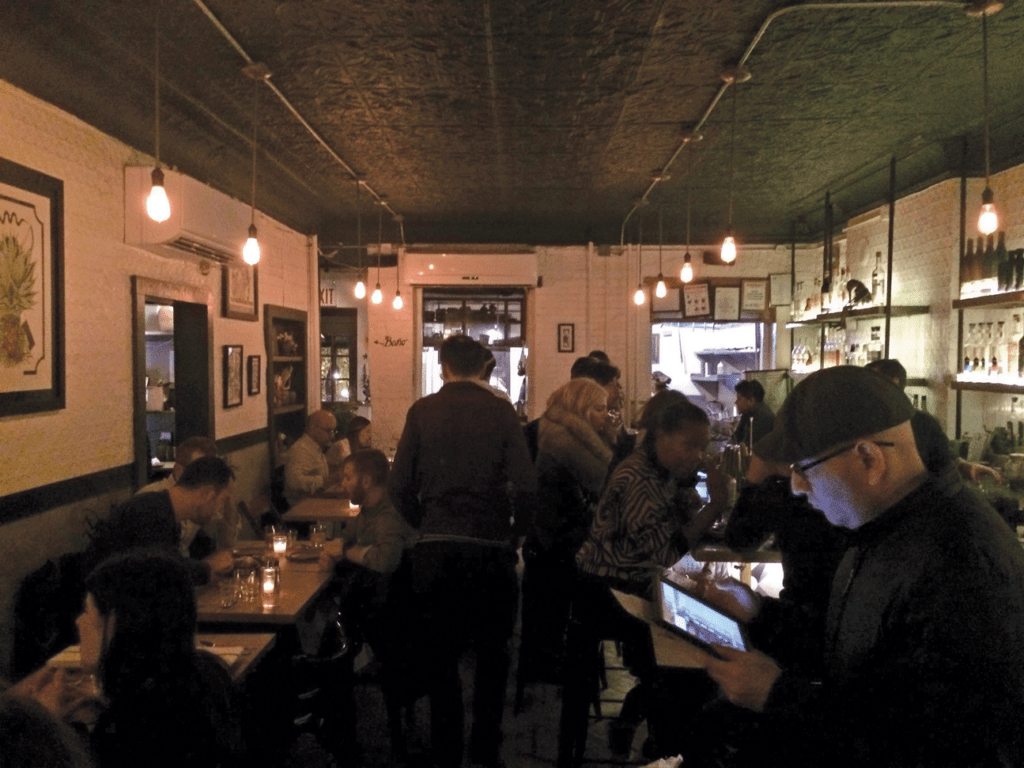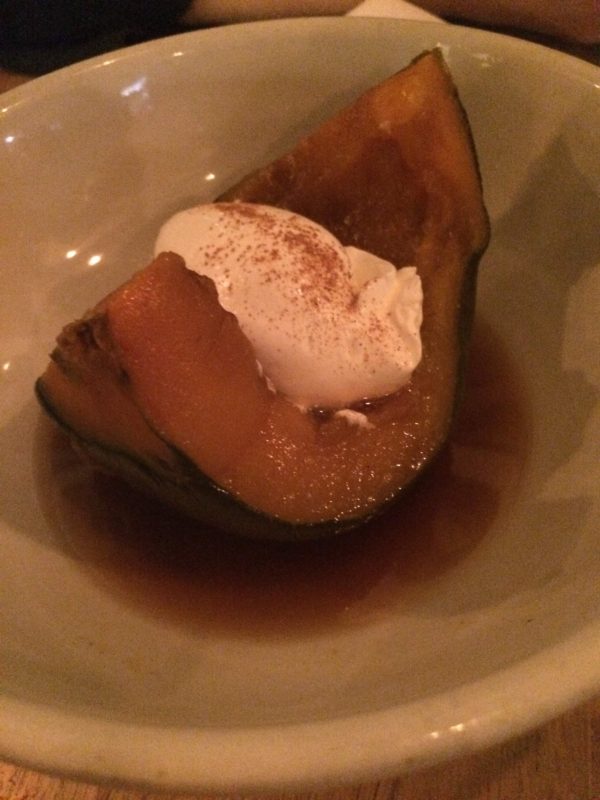
In November, the Mexican eatery Claro became the first restaurant in Gowanus ever to win a Michelin star. Executive chef T.J. Steele, previously of Union Square Cafe, and restaurateur J.T. Stewart, who also co-owns the nearby New American spot Freek’s Mill, opened Claro in the summer of 2017 at 284 3rd Avenue.
Generally regarded as the world’s authoritative fine-dining manual, the Michelin Guide has appeared annually since 1900. The French tire manufacturer used the book as a strategy to promote automobile travel. Michelin food inspectors now canvass much of Western Europe, East Asia, Brazil, and four North American cities: New York, San Francisco, Chicago, and Washington, D.C. For 2019, the Michelin Guide has awarded stars to 76 restaurants in New York City – all but ten in Manhattan.
I visited Claro for dinner on a Tuesday evening. If Michelin inspectors have traditionally favored stuffier dining rooms with white tablecloths, Claro subverts expectations with a warm, friendly atmosphere that feels more like that of a cozy – albeit stylish – neighborhood bar. Its menu eschews divisions by course, offering a simple list of twelve shareable plates ($15 to $32), three sides, and two desserts.
Especially prominent are tostadas, tacos, and moles. Mezcal dominates Claro’s bar, which proposes several tasting flights featuring varieties of the agave-distilled spirit, including Steele’s own brand, El Buho. It also appears in three of Claro’s seven cocktails, which share a beverage menu with three beers and a medium-sized selection of mostly Spanish wines.
My companion and I split four dishes, a side of black beans, and a dessert – starting with the empanada de cangrejo, which had a flaky, soft shell but a somewhat unremarkable crab filling despite a pleasant modicum of heat from its unidentified “market chiles,” per the menu’s picturesque phrase. (One’s heart sinks at the thought that the local market from which the chef whimsically plucks his colorful daily assortment of chili peppers may only be the Whole Foods down the street.)
The “tacos campechano [sic]” came next: three tortillas bearing small, tasty heaps of supple beef tongue and sweetbread, salsa verde, onion, and cilantro. Steele makes the tortillas in house from his own masa (corn dough).
Masa also forms the base for Claro’s rotating memelas – discs thicker than tortillas, simultaneously crispy and chewy. On the night of my visit, the memela topping was a pleasingly dank, springy mixture of wild mushrooms – too many kinds to name, according to our waiter. Our final savory course was the mole rojo, a delicately chocolatey sauce that set a perfect stage for three chunks of tender pork cheek beside a lively salad of mustard greens, apple, pear, raisins, and nuts.
For novelty at the end of the meal, we went for the dulce de calabaza instead of the warm chocolate mole cake, which I suspect to be a crowd-pleaser. The more obscure dessert is a straightforward arrangement consisting of a hunk of kabocha squash marinated in apple cider syrup, dolloped with excellent whipped cream. Even with the syrup, it feels virtuous to consume a plant for dessert – it’s pretty good, too. All in all, the meal was enjoyable – if, by the absence of any truly startling combination of flavors, not quite life-changing.
It may be better to go to Claro in the warmer months, since it has a large patio in back with plenty of seating and a grill that allows the staff to serve barbecued goat. The striking pop-art mural inside by the renowned Mexican artist Dr. Lakra – a cheekily reversed image, with a gang of gleeful goats cooking a young woman over a flame – hints at the practice.
For an additional aesthetic contribution, Steele and Stewart enlisted a Oaxacan artisan to produce their tasteful dinnerware, which was “handmade by Francisco Martínez Alarzón of Santa María Atzompa, with clay that can only be acquired by birthright.”
In the view of the Michelin Guide, the world’s greatest cuisines are, by a significant margin, French and Japanese. The inspectors don’t travel to Mexico, and even though Latino cooks have long powered professional kitchens of all types in America, from the bottom to the top of the gastronomic pyramid, no Mexican restaurant in the United States earned a star until 2013. This year, three Mexican restaurants in New York City received stars, but two of them, including Claro, are headed by white American chefs.
Raised in New Jersey, Steele has divided much of his adult life between Brooklyn and Oaxaca City in Mexico. Oaxaca is one of the poorest Mexican states but has nonetheless emerged as attractive tourist destination with a distinct regional cuisine that has generated two outposts in Gowanus alone: Claro and, just a block away on 4th Avenue, Oaxaca Taqueria.
The New Yorker’s enthusiastic review of Claro observed that Steele is challenging the idea that Mexican food should be inexpensive and informal, “using high-quality ingredients to make everything from scratch, and paying rent in a recently gentrified neighborhood.”
The notion that serving food traditionally eaten by poor people to wealthy gentrifiers at a much higher price point may count as a culinary innovation seems debatable. Pete Wells at the Times believes that, rather than using “Oaxacan recipes that have been passed down from generation to generation,” Steele crafts original dishes from “ingredients that might furrow the average Mexican grandmother’s brow, like kale and sunchokes,” and “still thinks like a New York chef” for all his Oaxacan inspiration.
Claro serves dinner seven nights a week, starting at 5:30 p.m., and offers brunch on weekends from 11:30 a.m. to 3:30 p.m.









